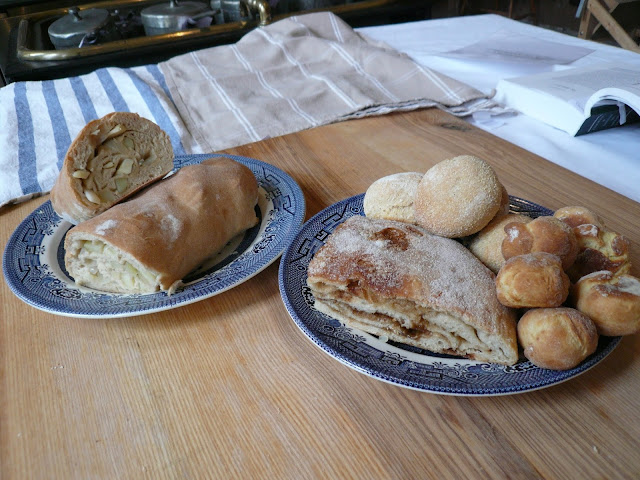This is a shortened version using the Earl’s account from 1652. Scroll further down to read his written version in full…
In 1652 the Earl was staying in London and awoke to plainly see ‘a thing all in white like a standing sheet with a knot a-top of it, about four or five foot high.’ ‘At last I thrust out both my hands to catch hold of it, but in a moment like a shadow it slid to the feet of the bed, out of which I leaping out of it, could see it no more.’ The Earl was concerned by this and his unease led him to ride home to Petworth that day.
He arrived home to find his wife in good health, but when he told her what had happened that morning, she told him to open a letter she had written and given to the footman that had not yet been posted - she had written ‘wherein she desired my speedy return, as fearing that some ill would happen to mee, because that morning shee had seen a thing all in white, with a black face, standing by her bed side which had frighted her so much as to make her scrike out so loud’.
So as far as they could tell they had both seen a ghostly figure on the same day at the same time, but one in London and one at Petworth. We wonder what happened to these ghostly figures?!
 |
| Lady Anne Percy, Countess of Chesterfield by Sir Peter Lely (can be seen in the Square Dining Room) |
The Earl’s account in full
Source: Allan Fea, Some Beauties of the Seventeenth Century (London: Methuen & Co., 1906), pp. 65 – 68
Writing in 1652 the Earl says: “A very odd accident this year befel mee, for being come about a law-sute to London, and lying in a lodging with my door fast locked (and by reason of the great heat that summer, all the side curtains being flung a top of the teaster of my bed), I waking in the morning about eight o’clock and turning myselfe with the intention to rise, planely saw, within a yard of my bedside, a thing all in white like a standing sheet with a knot a-top of it, about four or five foot high, which I considered a good while, and did rayse myselfe up in my bed to view it better. At last I thrust out both my hands to catch hold of it, but in a moment like a shadow it slid to the feet of the bed, out of which I leaping out of it, could see it no more.
The little beliefe I ever had in things of this nature made mee the more concerned, and doubting least[sic] some ill might have happened to my wife, I rid home that day to Petworth in Sussex, where I had left her with her father, the Earl of Northumberland; and as I was going up stairs to her chamber, I met one of my footmen, who told me that hee was comming to me with a packet of letters, the which I having taken from him went to my wife, who I found in good health, being in company with Lady Essex, her sister, and another gentlewoman, one Mrs. Ramsey.
And after the first salutation, they all asked mee what made mee to come home so much sooner than I intended. Whereupon I told them what had happened to me that morning; which they all wondering at, desired mee to open and read the letter that I had taken from the footman; which having stil in my hand I immediately did, and read my wife’s letter to mee aloud, wherein she desired my speedy return, as fearing that some ill would happen to mee, because that morning shee had seen a thing all in white, with a black face, standing by her bed side which had frighted her so much as to make her scrike out so loud that her weemen came running into the room.
I confess this seemed very strange, for, by examining all the particulars, wee found that the same day, the same hour, and (as neer as could be computed) the same minute, all that had happened to mee had befallen her, being fortie miles asunder. The Lady Essex and Mrs. Ramsey were witnesses to both our relations, and acquainted the Lord of Northumberland, who thought it a very extraordinary thing."






